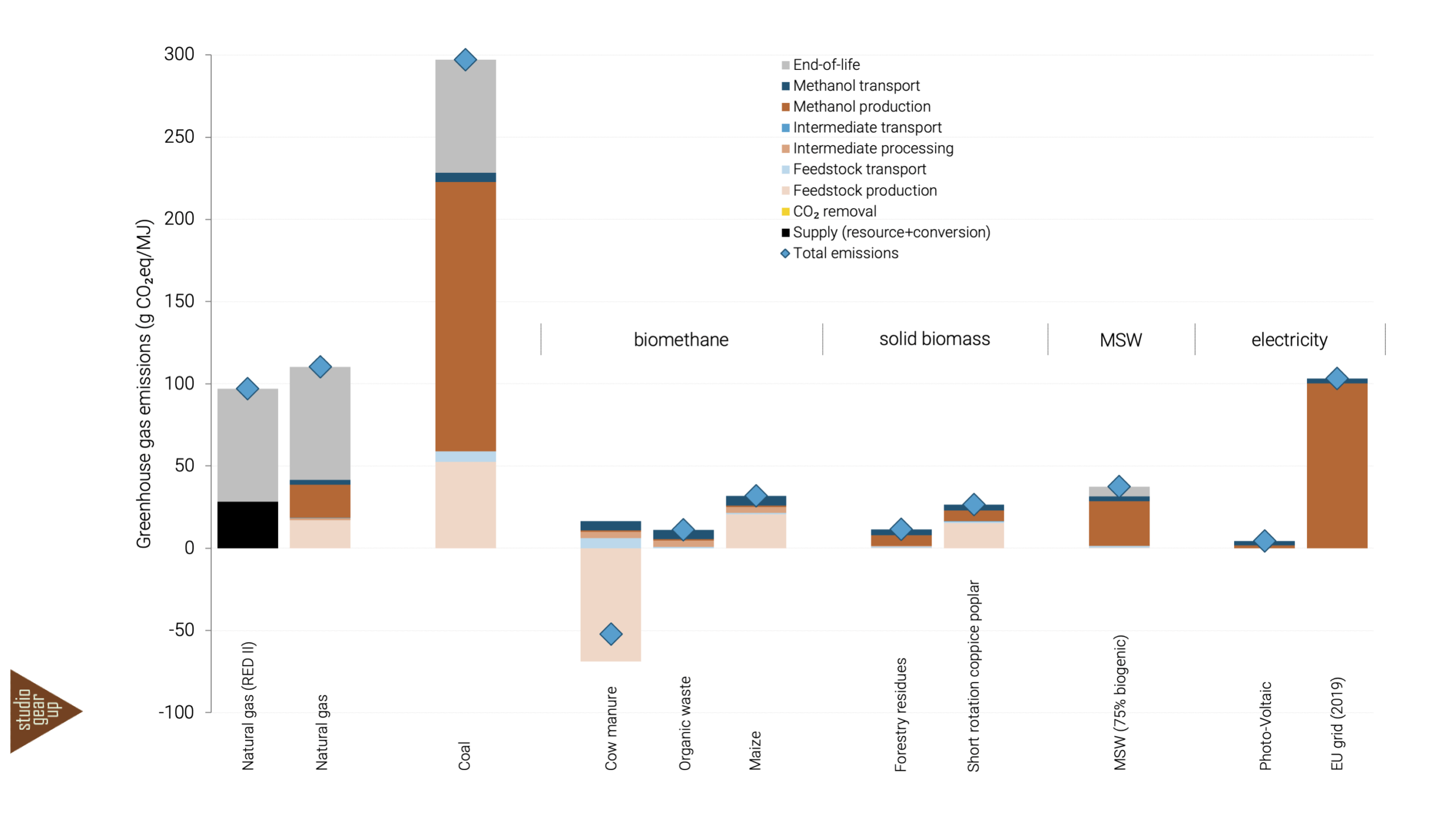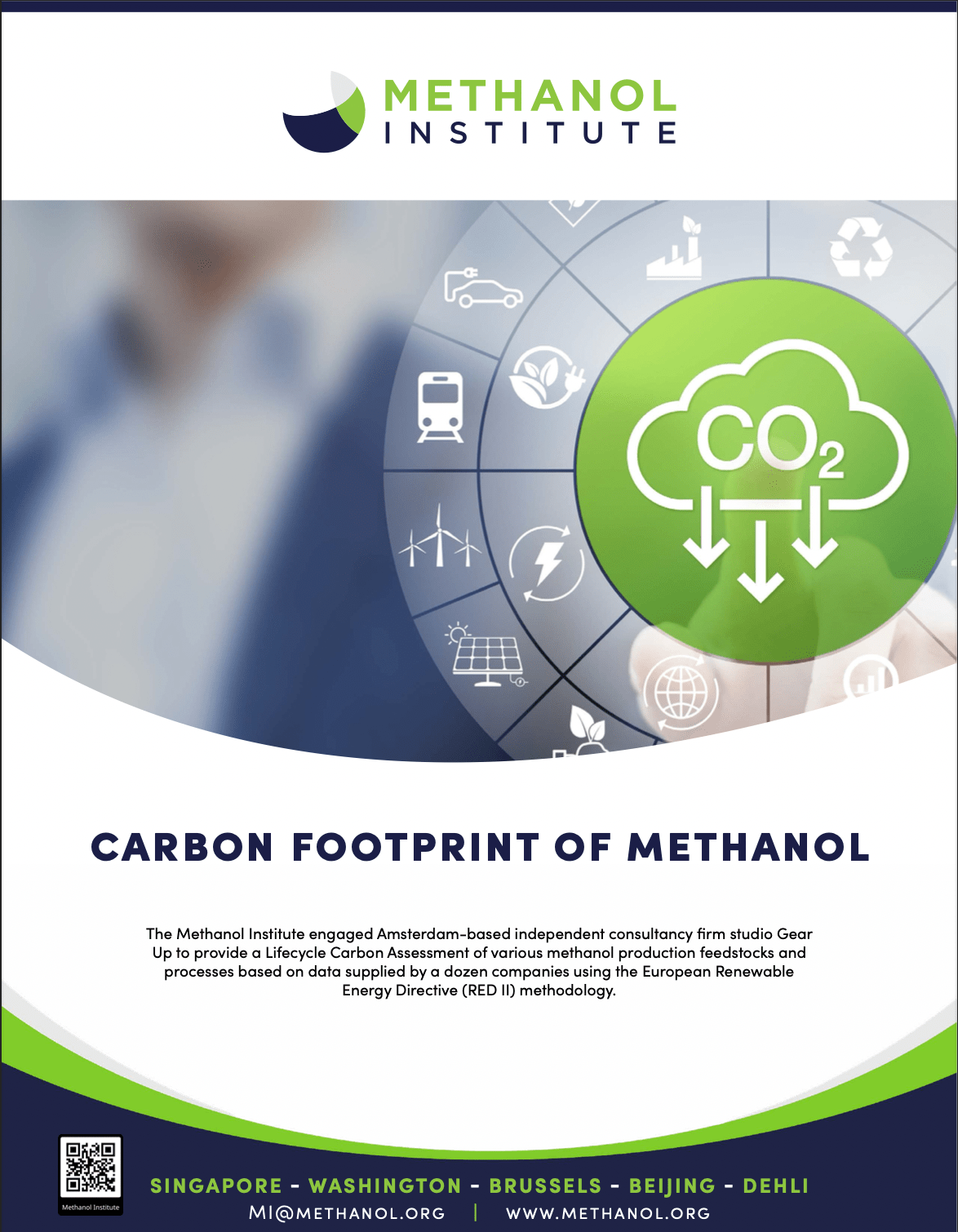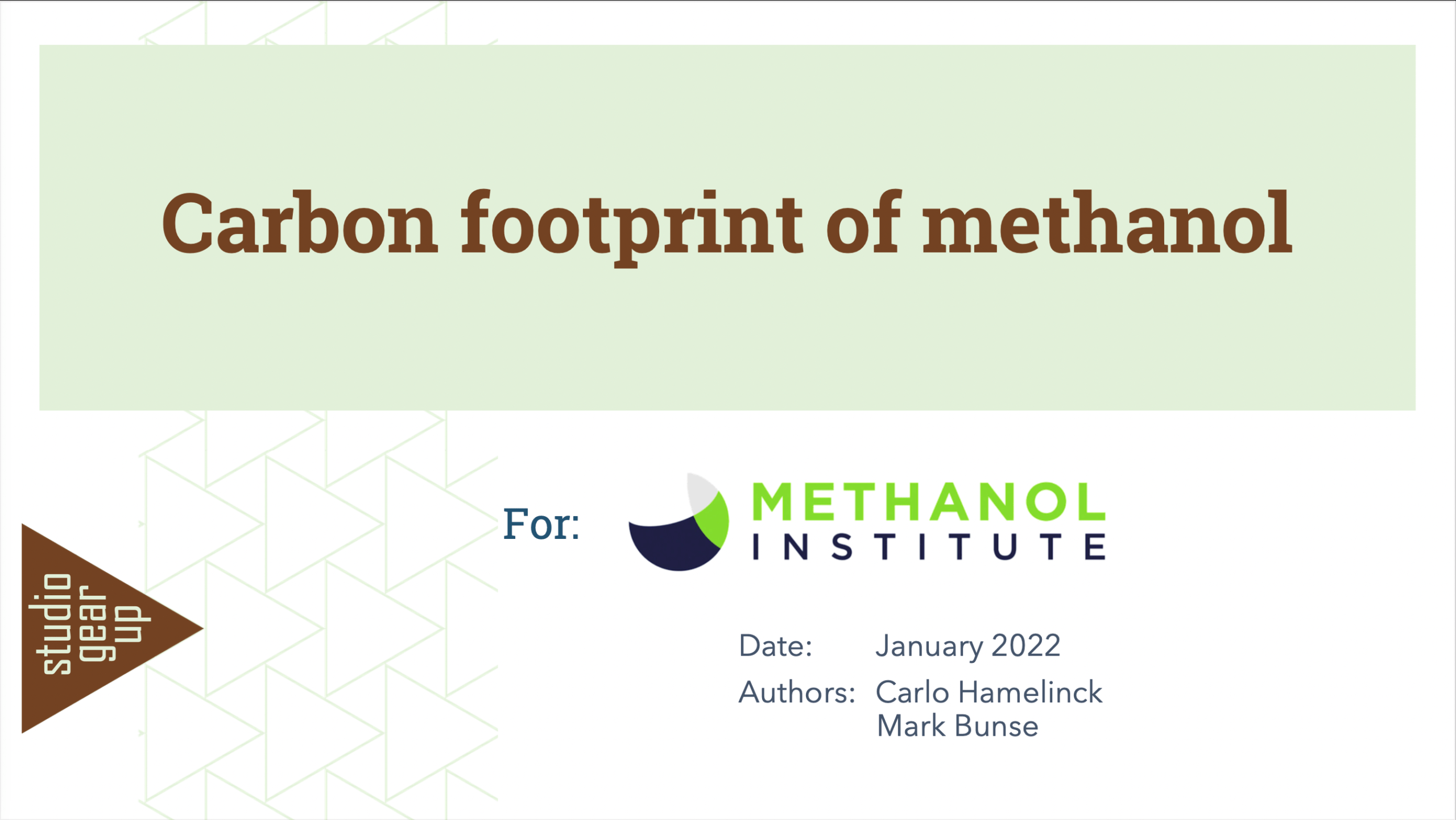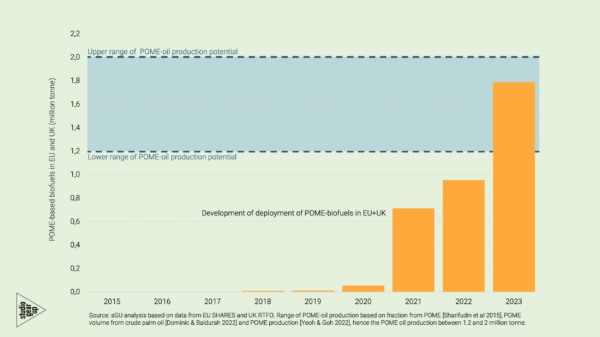For: Methanol Institute
[January – October 2021]
Methanol is an important base chemical and, when produced from renewable sources, methanol is interesting as a low carbon alternative fuel for e.g. the shipping sector. To understand the carbon savings that can be achieved by renewable methanol, requires up-to-date information on the carbon footprint, and a comparison to the fuels it proposes to replace. Moreover, methanol using industries increasingly ask for insight in the carbon footprint of the methanol they buy, in an endeavour to lower their own carbon footprint.
Therefore, the Methanol Institute wants to increase the understanding of carbon footprint assessments within the industry, and at the same time obtain insights in the current status of methanol climate impacts.This will improve the conversation with methanol using industry, shipping industry and renewable energy policy makers about the impact of the industry and the role of methanol in the transition to a climate neutral economy.
The Methanol Institute asked studio Gear Up to assess the lifecycle carbon impact of methanol produced from several feedstocks and via various pathways, based on data supplied by the methanol producing industry, and in line with the methodology specified in the European Renewable Energy Directive (RED II). In total, a dozen companies supplied data on existing facilities and facilities under development, on basis of which the lifecycle carbon impact of methanol from several fossil and a range of renewable sources was assessed.

Figure 1 The carbon footprint of methanol produced from various feedstocks and via different conversion pathways, in gCO2eq/MJ.
Low carbon footprint with renewable feedstocks
Our study makes clear that the carbon footprint of methanol depends strongly on the feedstock and the production pathway. The majority of emissions in fossil pathways resides in the stoichiometric end-of-life emissions. In pathways based on renewable feedstock these emissions are climate neutral. This causes a significant reduction in climate emission and the carbon footprint greatly improves.
One should be careful not to generalise the outcomes for methanol from any feedstock category, because variations between feedstock within the same category, technological differences in the installation set-up, and supply chain differences cause a significant difference in the lifecycle carbon footprint results. Natural gas based pathways have some options for improvement, but the real improvement only comes from using renewable feedstocks.
There are various options to produce methanol from renewable feedstocks. The main options are, replacing natural gas by biomethane, via gasification of solid biomass or the biogenic fraction of municipal solid waste, or by combining renewable electricity with CO2 captured from air or nearby industrial emitters. In most cases the renewable methanol would achieve 60-90% emission reduction, when it would be used as a fuel replacing fossil fuels, and in some cases it is possible to reduce climate emissions with more than 100%.
Report downloads
On basis of our report the Methanol institute also published a Whitepaper on the Carbon footprint of methanol (see MI’s website) . Both the studio Gear Up report and the white paper van be downloaded via the links below.





